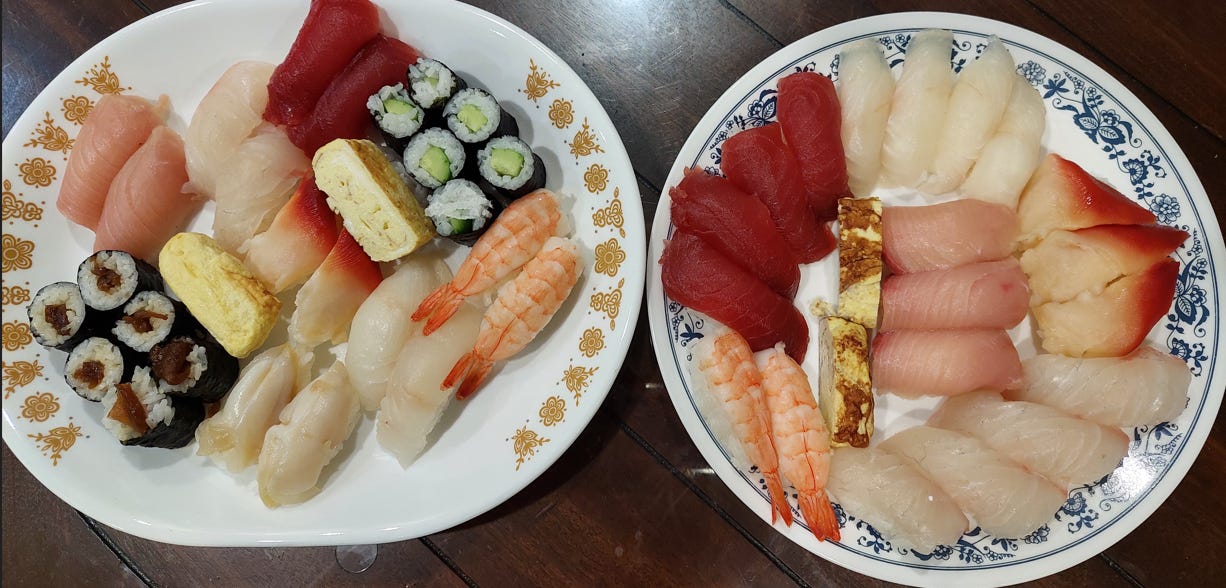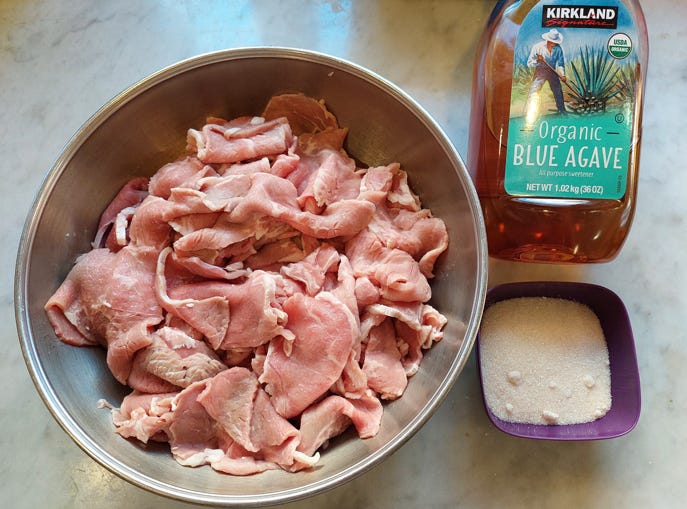I’m going to try something new this week. In my Substack profile, I introduce myself as the family cook (among other things). I have been for some time now—it all began when I started packing lunches for my kids in 2009. Before then, I would just make a mess in the kitchen for something that vaguely resembled food. Now I don’t even need measuring cups or spoons. I’ve gotten to know what “appropriate amount” means.

Since food is a yuuuuge part of any culture, I’ve always wanted to and thought about putting up some Korean recipes that I’ve learned and tweaked over the years. The thing about Korean food recipes from most of the books and websites is that they always leave something out and use ingredients/condiments/sauces that are hard to get a hold of outside of Korea. So even if you follow the recipe to a tee, it still might not taste quite right.
With that, I will from time to time put up recipes that are Costco-friendly. That is to say, ingredients that you can get from your local grocery store anywhere in the US, or anywhere else in the world for that matter.
As the first installment in this series, I’ve picked bulgogi (불고기, literally “fire meat” but obviously referring to “cooked meat”), or soy sauce base marinated beef. A bowl of rice, bulgogi, and some kimchi (or any other pickled vegetables), you have a Korean meal on your table.
If you’ve never had Korean food before (pity…), this is a good place to start. The end product will look something like this.
Bulgogi usually isn’t made from the best cuts of the beef—it’s the opposite. Tough and cheaper parts of the beef are sliced thin, tenderized (sort of), and marinated.
But, I’m feeding my family, not trying to maximize profit at a restaurant, so I use the good stuff. Just make sure that you find thinly sliced beef—I’ve used “steak shavings” from Ralphs, the same stuff that you make Philly Cheesesteak Sandwich with. Those work almost as good although they were a little too thin.
You see that pool of red liquid at the bottom of the pack? It’s something called myoglobin in beef—it’s NOT blood! For bulgogi recipe (and Chinese cooking methods do this too), you have to get rid of the myoglobin as much as possible. I know you’re not used to doing this, but I guarantee that you’re not ruining it, so please follow along.
The only reason why I cut them in half was each slice was a little too big. You don’t have to if you don’t want to.
Submerge the beef (after you separate them a little) in cold tap water. You will immediately see the water turn pinkish red. Leave for about 30 minutes and drain.
Repeat the process 3 times, but you won’t be able to get rid of it 100%. 3 times is good enough. The beef will lose its red color and be pale pink—it will look almost like pork.
OK, time for the marinade. I don’t have the exact measurements because that really doesn’t matter all that much. What DOES matter is the proportion of the ingredient’s mixture. So, make just enough for the amount of beef you have on your hands. But for the sake of uniformity and convenience, I’ll base this off of about 3 pounds of beef. Adjust accordingly.
To the de-myoglobined and drained beef, add 4 parts sugar (4 tablespoons) and 1 part Agave syrup (1T). Mix well and leave for 20 minutes. Do not rinse the sweet stuff off. Leave everything in there.
After the 20 minutes, add 7 parts (7T) of regular soy sauce1 (NOT “dark soy sauce” NOT “Lite soy sauce”) and 1 part sesame seed oil. And that’s pretty much it. **Keep in mind that “Dark” soy sauce is more of a FOOD COLORING than soy sauce. It’s used in small portions in very specific situations. Not to be used in everyday cooking.
Add crushed garlic, sliced onions, some green onions, and any mild tasting mushrooms to your preference.
Up to here, you can find similar recipes on many websites. But to me, here’s the kick to the whole thing and an indispensable part.
Pulverize 1/2 large onion in a blender and add to the bulgogi marinade. If you don’t have a blender, you can use the dried onion powder (1 part) for about 76.52% of the flavor.
Put everything in.
Mix and let it sit for 60 minutes. It will smell wonderful already. Notice, however, that it doesn’t look dark at all. Maybe a tad darker than the original beef color but the soy sauce flavor is in there.
Heat up a pan with bit of cooking oil (just enough to coat the pan), wait for it to get hot and dump the whole thing in. Cook until done and you’re ready to go.
I marinated the whole 4.5 pound pack from Costco, divided into small portions, froze them, and had the kids take them to their apartments—this freezes well—so I don’t have a picture of the finished bulgogi.
Bonus: simplest salad dressing you will ever find that tastes really good.
1 : 1 : 1 : 1 = water : sugar : soy sauce : vinegar
Chop up some onion and bell pepper, if you’d like, add to the salad with the dressing.
Try it and see if you like it.
Could be 8T of soy sauce if you like your foods saltier, or “well-seasoned.”















My salivary glands are working now. When are you coming to visit (and cook, LOL)? What happens if you leave out the sugar and/or agave? My husband and family try not to eat sugar these days. I have noticed Korean cooking (well modern cooking) uses very much sugar.